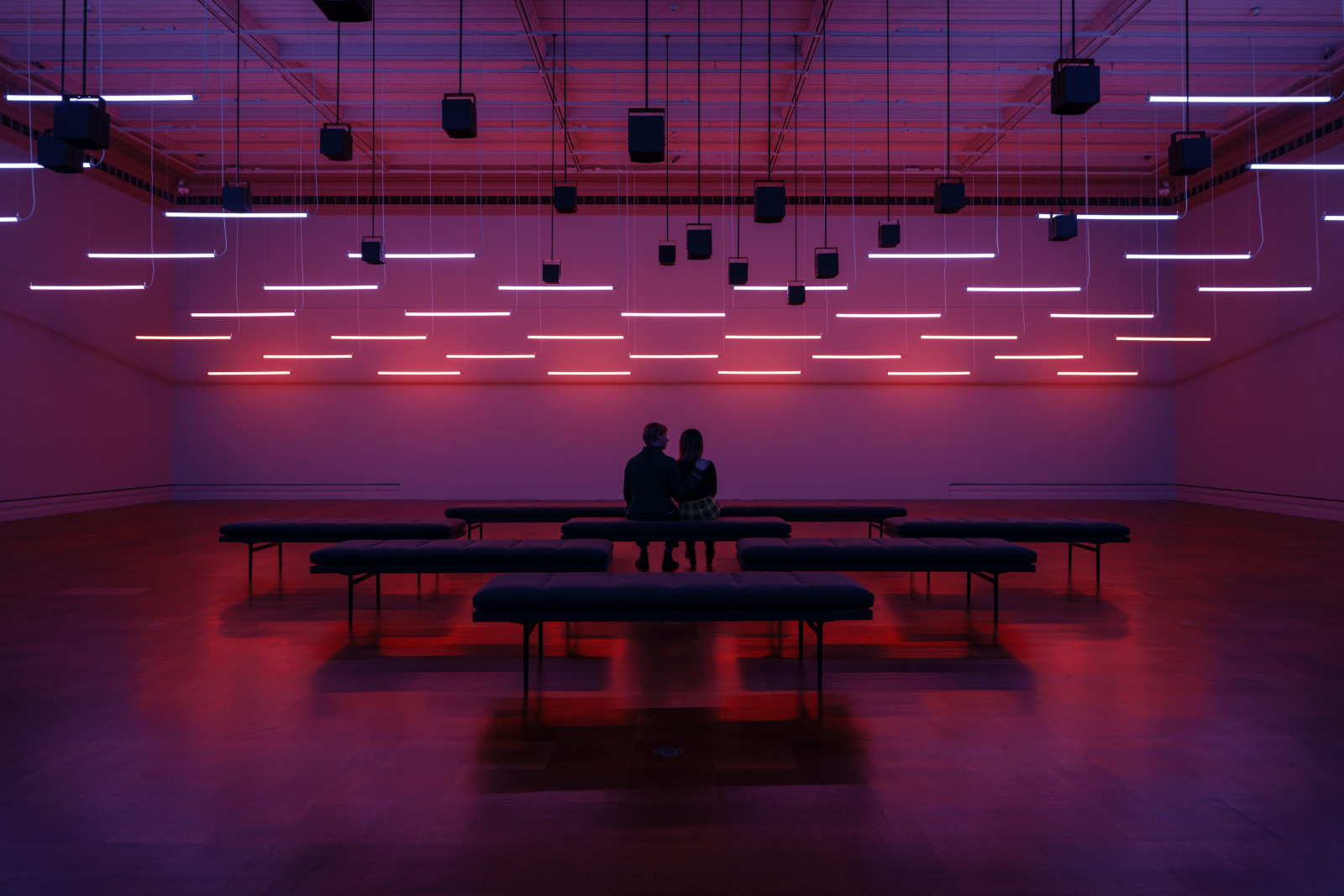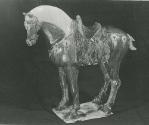Tomb Figure of a Standing Horse
Tomb Figure of a Standing Horse
Place of OriginChina
DateTang Dynasty (618-907), 700-750
DimensionsH: 18 1/4 in.
MediumEarthenware with polychrome ("three-color") glaze
ClassificationSculpture
Credit LinePurchased with funds from the Libbey Endowment, Gift of Edward Drummond Libbey
Object number
1950.311
Not on View
DescriptionThis low-fire ceramic horse stands on a thin, rectangular ceramic base, its head turned slightly to its proper left. The figure is hollow, likely constructed from a multi-mold process, with applied elements like the saddle, saddle blanket, bridle, and decorative tear-shaped accoutrements. A white ground layer was applied to the earthenware body before thin, brush-applied glazes of brown, green, and blue were added. Glaze drips are visible on the top side of the base.
Label TextThis magnificent horse was created to be placed in the tomb of a high-ranking person during China's Tang Dynasty (618-907). Such figures, known as mingqi (spirit objects), provided for the deceased's needs in the afterlife. This horse is decorated with a "three-color" (sancai) glaze, a technique perfected during this period, featuring drips of brown, green, and blue. Its detailed saddle and bridle show the importance of horses for the military, trade, and aristocracy of Tang China. Experts note that figures like this were made in official workshops and rationed to the elite, replacing the earlier custom of burying valuable gold and silver.Published ReferencesUnpublished.Tang Dynasty (618-907)
Possibly 7th-8th century
19th or 20th century
about 575 BCE
50 BCE-50 CE
about 800
about 800
Probably first half of 1st century

Membership
Become a TMA member today
Support TMA
Help support the TMA mission















